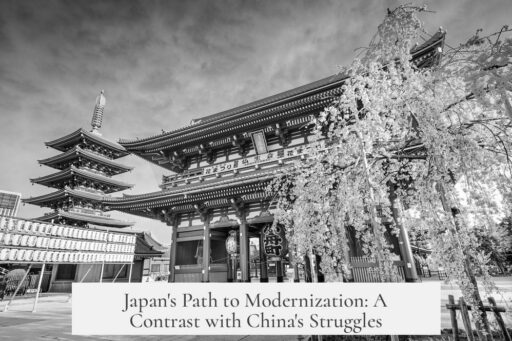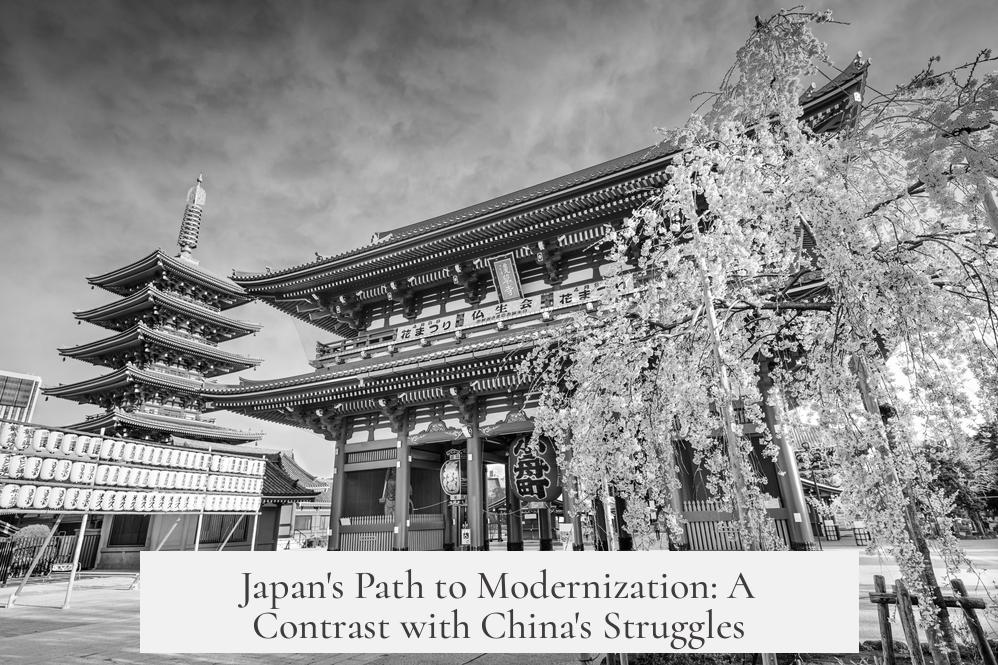Japan’s modernization success compared to China stems from key differences in their historical contexts, political structures, and responses to Western presence during the 19th century.
At the outset of the 19th century, Japan and China maintained distinct relationships with Western powers. China, under the Qing dynasty, allowed limited trade only through the Canton port. Japan restricted foreign trade even further, limiting exchange primarily to the Dutch. This shaped differing perceptions and strategic approaches toward the West.
The Qing government believed its extensive commercial ties gave it leverage over Europeans. Chinese elites assumed no European power would risk war due to potential trade losses. This confidence led to miscalculations, exemplified by the Opium War triggered by attempted bans and antagonism toward British merchants in 1839.
Japan lacked comparable bargaining power. It could not threaten meaningful trade embargoes beyond the Dutch. Japanese thinkers like Aizawa Seishisai advocated for consolidating power to repel foreigners and oppose Christianity, seen as instruments of Western control. Japan faced foreign pressure differently than China and ultimately capitulated peacefully to American demands in 1853-54 rather than fight.
China’s internal instability contributed to its modernization challenges. The Qing dynasty ruled a vast, multiethnic empire primarily governed by Manchu elites, yet most people were Han Chinese. Rising nationalism threatened the empire’s cohesion. In contrast, Japan was a more ethnically unified state, ruled by the Japanese emperor, strengthening internal unity during modernization.
Japan’s political system remained comparatively stable. Its Tokugawa bakufu and regional domains, though fragmented, supported a level of governance continuity until the late 19th century. The Meiji Restoration of 1868 centralized power, overthrowing the Tokugawa regime and driving rapid reforms. China, however, experienced deeper decentralization and weakening state functionality over the same period.
Japanese intellectuals responded to Western influences by embracing selective adaptation. They positioned cooperation with Western powers as a tool for national strengthening and competition. The Boshin War symbolized this shift toward centralization and modernization using Western models. Chinese reformers lacked a cohesive national strategy and were divided by competing interests, including religious and ethnic factions, further hampering modernization efforts.
The contrasting reactions to foreign pressures also shaped outcomes. Chinese movements like the Taiping Rebellion sought religious and political transformation but also destabilized the Qing dynasty. Japanese radicals initially resisted foreigners through violent means in the 1860s but later aligned under the modernizing Meiji government, pushing Japan toward industrialization and political reform.
| Factor | Japan | China (Qing) |
|---|---|---|
| Foreign Relations | Limited, mainly Dutch trade; no significant leverage | Extensive trade through Canton; overconfidence in leverage |
| Political Structure | Ethnically unified, emperor-led; centralized post-1868 | Multiethnic empire, Manchu rulers; decentralizing and unstable |
| Response to Western Pressure | Initial resistance; strategic emulation and cooperation | Hostility triggered wars; inconsistent reform attempts |
| Government Stability | Relatively stable leading to functional reforms | State weakened by internal strife and nationalism |
| Nationalism | Unified national identity supported modernization | Nationalist tensions threatened imperial integrity |
Overall, Japan’s modernization success owes much to its more stable and centralized political order, which enabled strategic reforms. Its early recognition of Western technological and military superiority prompted pragmatic adaptation instead of confrontation. Meanwhile, China’s larger empire, ethnic divisions, and overreliance on commercial leverage limited the Qing state’s ability to reform effectively in the face of Western pressures.
The lack of deep comparative scholarship leaves many nuances underexplored, but the existing evidence highlights these fundamental contrasts in political strategy, international relations, and internal cohesion that shaped divergent modernization paths.
- Japan’s restricted but steady Western contact fostered pragmatic adaptation.
- China’s overconfidence in trade leverage delayed meaningful reforms.
- Japan’s ethnic unity and centralized power allowed stable reform.
- China’s multiethnic empire faced nationalist resistance to modernization.
- Japan viewed Western cooperation as a means to compete; China often saw it as an end.




